Uncategorized
May 4, 2015 – LAKE MILLS, Wisc.– Whether inspecting pipe laterals for cleaning, repair or 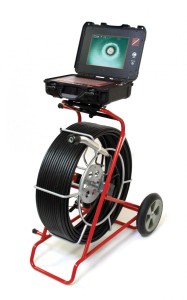 inspection, plumbing specialists now have a one-touch lateral camera system that supports a wide range of pipe sizes with a highly durable yet comparatively inexpensive self-contained unit. The 200-foot pushrod capability of the new PortaVision 3 from HammerHead Trenchless Equipment can be increased from its standard system to a 300- or 400-foot capability simply by changing out its premium fiberglass spiral-wound pushrod reels – eliminating the cost of duplicate system components to meet the needs of all jobsite applications.
inspection, plumbing specialists now have a one-touch lateral camera system that supports a wide range of pipe sizes with a highly durable yet comparatively inexpensive self-contained unit. The 200-foot pushrod capability of the new PortaVision 3 from HammerHead Trenchless Equipment can be increased from its standard system to a 300- or 400-foot capability simply by changing out its premium fiberglass spiral-wound pushrod reels – eliminating the cost of duplicate system components to meet the needs of all jobsite applications.
“I think the PortaVision 3 system offers users two huge values,” said Matt Gabrielse, HammerHead lateral products support specialist. “One is the increased versatility they get by simply swapping out reels for longer runs. The other is the increased life they’ll enjoy from its premium fiberglass spiral-wound pushrods.”
Pushrods are subject to the most abuse during inspection work. The fiberglass spiral-wound material used to make PortaVision 3 Premium Push Rods lasts up to four times longer than less durable push rod materials.
Wheeled camera skids are available for use with pipe diameters 8 to 12 inches.
The 10.4-inch hi-res LCD monitor is easily removed from the frame for quick mobilization. For one-touch recording of up to seven hours of video and sound, operators simply push the PortaVision3 On-Demand recording button.
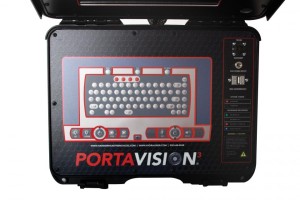 Hardwired connection to the monitoring unit’s integrated USB port (8 Mb USB memory device included) eliminates the need to purchase a dedicated computer notebook, netbook or laptop. The connection ensures high-quality recording. No Bluetooth or Internet connection is required.
Hardwired connection to the monitoring unit’s integrated USB port (8 Mb USB memory device included) eliminates the need to purchase a dedicated computer notebook, netbook or laptop. The connection ensures high-quality recording. No Bluetooth or Internet connection is required.
The PortaVision 3 is available from HammerHead Trenchless Equipment or from authorized dealers, worldwide. Authorized dealers can be found on the web at www.hammerheadtrenchless.com or by calling 800.331.6653. (International: + [1] 920.648.4848). Equipment pricing and information is also available online at www.hydraliner.com.
Photo 1 Caption: PortaVision 3 one-touch lateral camera system from HammerHead
Photo 2 Caption: Easy to use interface includes one touch recording.
Uncategorized
NASTT turns 25 in 2015! What was happening 25 years ago?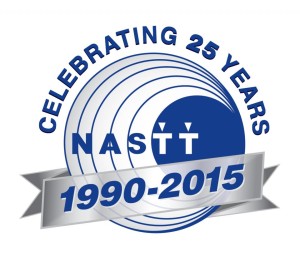
From May 2-4, the first talks between the government of South Africa and the African National Congress took place.
On May 4, Latvia declared independence from the Soviet Union.
ON May 5, Craig Perret aboard Unbridled wins the 116th Kentucky Derby in 2:02.
Check in every Friday in 2015 when NASTT posts more fun facts about 25 years ago…
Uncategorized

In water and wastewater systems, an “asset” is a component of a facility with an independent physical and functional identity and age (e.g., pump, motor, sedimentation tank, main). The renewal and replacement of the assets that make up our nation’s water infrastructure is a constant and ongoing task. To efficiently manage this important part of a utility’s business, many have turned to asset management. This approach has gained recognition all across the world—and across all infrastructure heavy sectors—for its effectiveness in maximizing the value of capital as well as operations and maintenance expenditures.
You can read more about sustainable water asset management practices on the EPA website here.
NASTT’s Online Trenchless Library has dozens of technical papers that discuss asset management. You can browse the titles here.
Uncategorized
Rainfall-derived infiltration and inflow (RDII) is the increased portion of water flow in a sanitary sewer system that occurs during and after a rainfall as a source of operating problems in sanitary sewer systems. RDII is the main cause of sanitary sewer overflows (SSO) to
- basements,
- streets, or
- nearby receiving waters.
The extent of infiltration also correlates with the condition of aging sewers. Excessive RDII can also cause serious operating problems at wastewater treatment facilities. There is a need to develop methodologies and computer tools to assist communities in developing an optimal capital improvement program, while providing flexibility for future improvements.
Continue reading on the EPA website.
Uncategorized
Perma-Liner Industries is celebrating the Grand Opening of their Illinois Distribution Facility.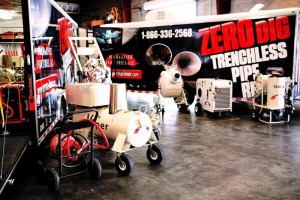
Check out some of the features that will be available at our one-day event on May 20th 2015:
- Live Demonstrations: Perma-Main™ Continuous Lining Top Gun, Perma-Lateral™ Lining with Steam Cure, Sectional Point Repair, Pull In Place, Reinstatement Cutters and more!
- Show Specials: Specials will be announced during the event and available only to attendees on May 20th 2015.
- Financing: Zero Down, No Payments for 90-days! Get pre-approved before the show.
Register To Attend: Call 1-866-336-2568 to confirm your reservation.
When:
Wednesday, May 20, 2015 from 9am to 4pm
Where:
Illinois Distribution Facility
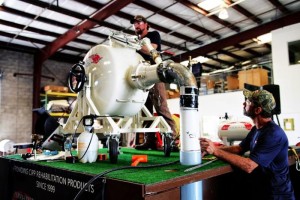
10220 Bode Street, Unit D3
Plainfield, IL 60585
To learn more visit the Perma-Liner website.
 inspection, plumbing specialists now have a one-touch lateral camera system that supports a wide range of pipe sizes with a highly durable yet comparatively inexpensive self-contained unit. The 200-foot pushrod capability of the new PortaVision 3 from HammerHead Trenchless Equipment can be increased from its standard system to a 300- or 400-foot capability simply by changing out its premium fiberglass spiral-wound pushrod reels – eliminating the cost of duplicate system components to meet the needs of all jobsite applications.
inspection, plumbing specialists now have a one-touch lateral camera system that supports a wide range of pipe sizes with a highly durable yet comparatively inexpensive self-contained unit. The 200-foot pushrod capability of the new PortaVision 3 from HammerHead Trenchless Equipment can be increased from its standard system to a 300- or 400-foot capability simply by changing out its premium fiberglass spiral-wound pushrod reels – eliminating the cost of duplicate system components to meet the needs of all jobsite applications. Hardwired connection to the monitoring unit’s integrated USB port (8 Mb USB memory device included) eliminates the need to purchase a dedicated computer notebook, netbook or laptop. The connection ensures high-quality recording. No Bluetooth or Internet connection is required.
Hardwired connection to the monitoring unit’s integrated USB port (8 Mb USB memory device included) eliminates the need to purchase a dedicated computer notebook, netbook or laptop. The connection ensures high-quality recording. No Bluetooth or Internet connection is required.



